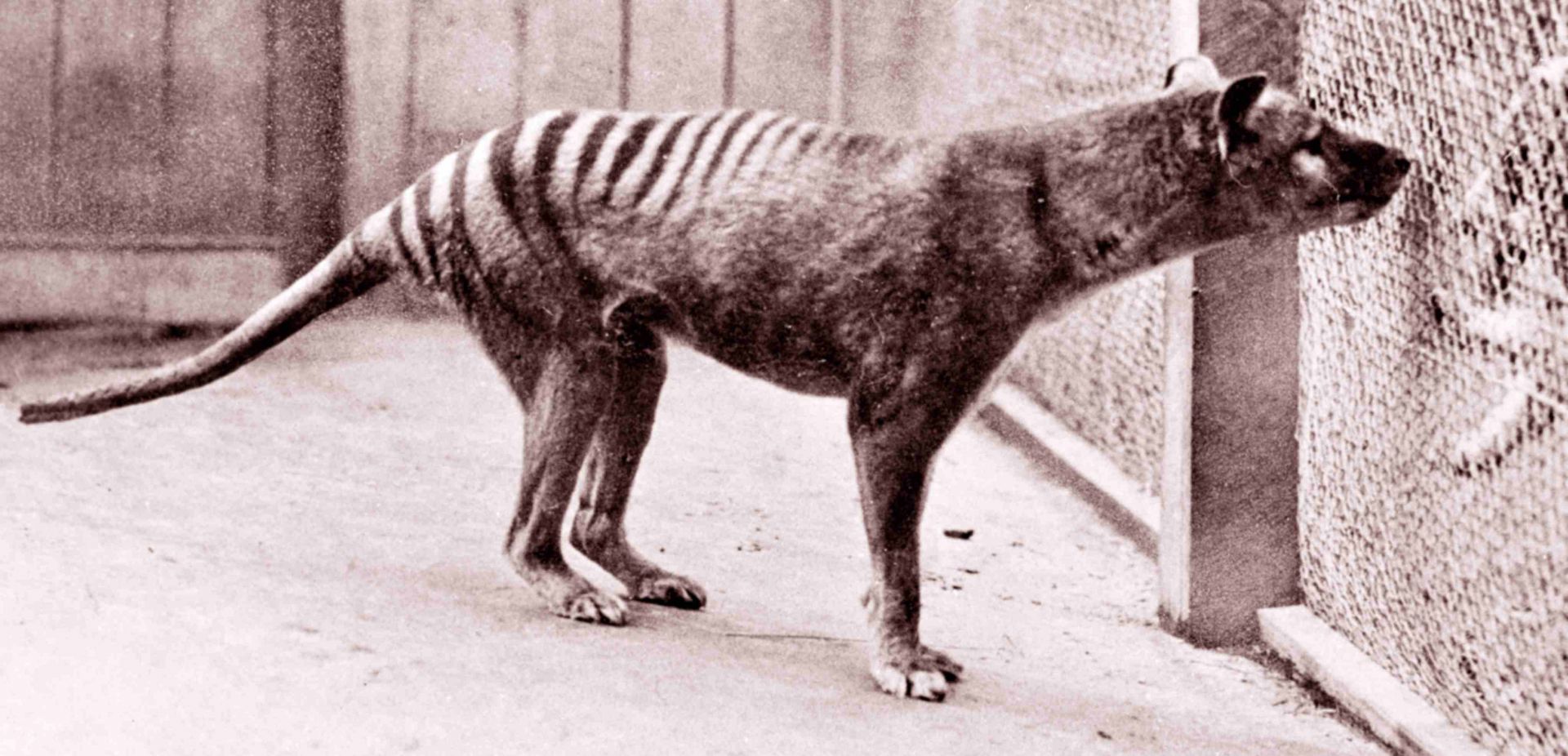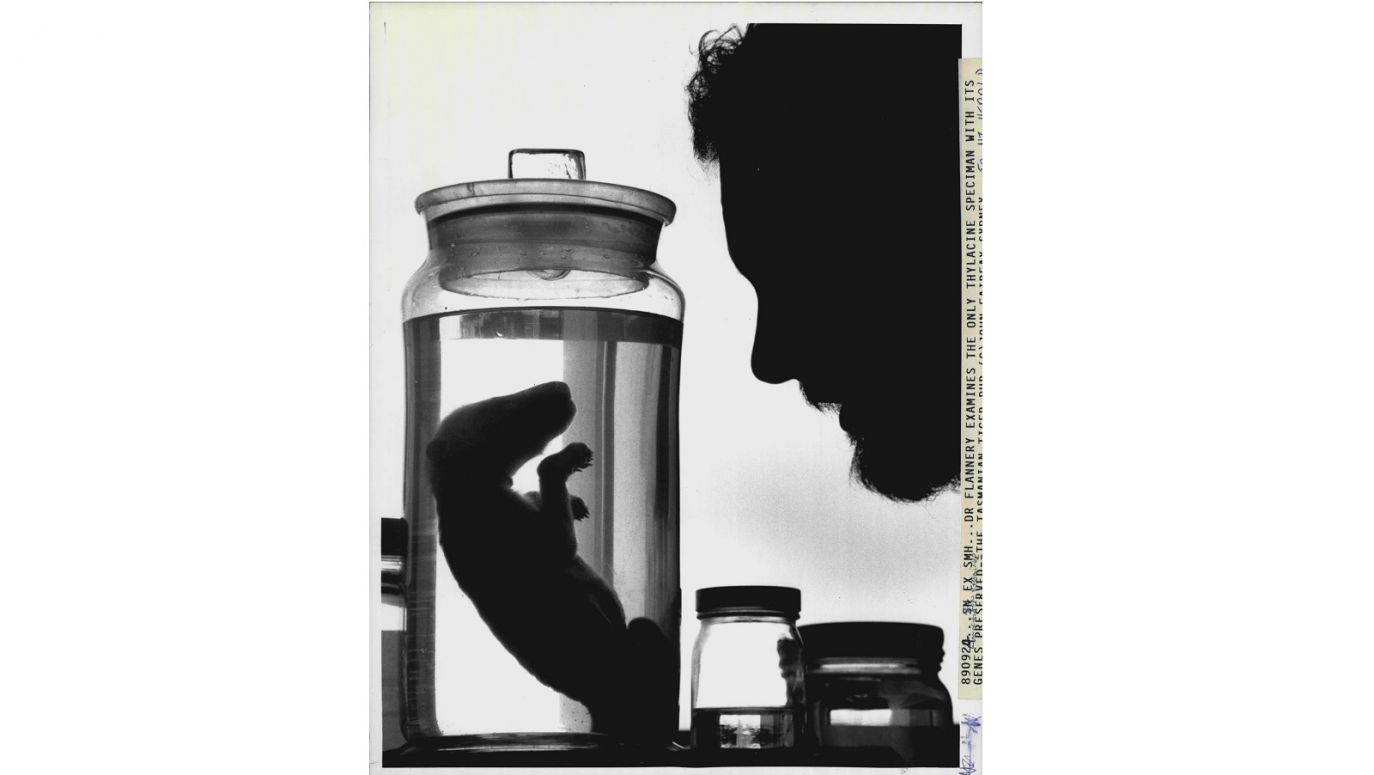Why are scientists trying to resurrect the Tasmanian Wolf?
07.09.2022
Scientists have used the genetic material of a puppy that has been preserved in alcohol for a century. The entire DNA of the thylacine, known as the Tasmanian Tiger, has been recovered, says biology professor Tomasz Sulej.
TYGODNIK TVP: An American biotechnology firm in partnership with scientists from the University of Melbourne plan to resurrect the Tasmanian Tiger. Before we start to talk about the how and why, what sort of animal was it?
TOMASZ SULEJ: Well, the name “Tasmanian Tiger” is somewhat controversial. We call it in Polish, a wilkowór or a Thylacine. It defines its nature as a marsupial, a pouch-carrying animal, that is nonetheless a predator. It looks like today’s dogs, of medium build, but striped like a tiger. Hence the English sounding name. We called it in Polish a wilkowór or a marsupial wolf and currently it’s the Tasmanian marsupial wolf. It was certainly an uncommon animal, because it came from the marsupial family though it was a predator. It’s worth saying that it evolved completely in isolation as a separate branch of species and one that had separated itself from other predatory placental animals. It’s a strange but great example of how evolution leads to the same destination but by different routes.
So if it was so exceptional, why did it become extinct?
It is extinct today, that’s for sure. But we humans were the reason for its demise. This chiefly happened in Australia where it lived. The last were found in Tasmania, and from there we got the description of Tasmanian.
It was seen as a hunter of domestic sheep and fowl, so that’s the reason why the first settlers in not only in Tasmania but Australia hunted it down considering to be a parasite on four legs. The last few examples were found in zoos and some attempts were indeed made to save the species from extinction. Unfortunately the last example died in 1936 and the species died out for good.
There was a stuffed Tasmanian Tiger in the Museum of Evolution of the Polish Academy of Sciences. This means that here was a Polish contribution to the extinction. At the time no one considered that this animal could be extinct so quickly. By killing it we are part of this extinction.
We said that the Tasmanian Tiger preyed chiefly on sheep and chickens, but since it did exist, maybe it was useful for nature?
Is this a good idea? There may be many opponents of such intervention in nature.
It’s interesting from the scientific viewpoint. It appears that recreating a mammoth is still extremely problematic. Scientists declared some time ago that they will recreate the species but so far they have been unsuccessful. There may be several reasons for this. Firstly, we have no such complete a DNA example as the one for the Tasmanian Tiger. The second is the very long pregnancy in elephants. Remember that the mammoth would be born from a female modern elephant. Pregnancy lasts around two years and the time that an example of another species would be kept in the womb of the female would be correspondingly long. It could lead to complications.
It's different with marsupials. The pregnancy is very short. After two weeks the offspring , at a very early stage of development, make its way into the pouch in which it lives the remainder of its development. So the Tasmanian Tiger would have to spend in its foster mother from another species would be really short. So there’s a chance that this experiment would have a greater chance of success.
There would be opposition on ethical grounds, a feeing of genetic manipulation. But I don’t think that there’s a huge problem with this. With this kind of technology we have a chance to treat genetic diseases in humans. We have many examples that are connected to the damage done to one gene alone. All parents want their children to be healthy, so our treatment like this scientific progress will make us learn how to treat illnesses from dysfunctional genes.
It’s worth remembering that the technology of editing the DNA, genetic manipulation has been used for a long time. We can take the example of dairy milk and whether we want it to contain insulin. Many medicines can be produced using this method. Naturally there are criticisms that since we are ready using these methods it won’t be too long before we shall be experimenting with human genetic manipulation. But the scientific community is united on this point; to limit the experimentation. It’s a different thing to recreate an extinct species that has been hastened by human action and another to manipulate human DNA.
Has any extinct species been recreated recently?
It’s been possible in the case of species that have died out a short time ago and have been returned to the ecosystem. But in the case of the mammoth, and as I have said, other species that died out centuries ago, this has so far been unsuccessful. It would be a great success otherwise. Biology may be keeping a surprise for us one that wo don’t know about yet. God being playful may not be as straightforward as we have thought.


 SIGN UP TO OUR PAGE
SIGN UP TO OUR PAGE 






